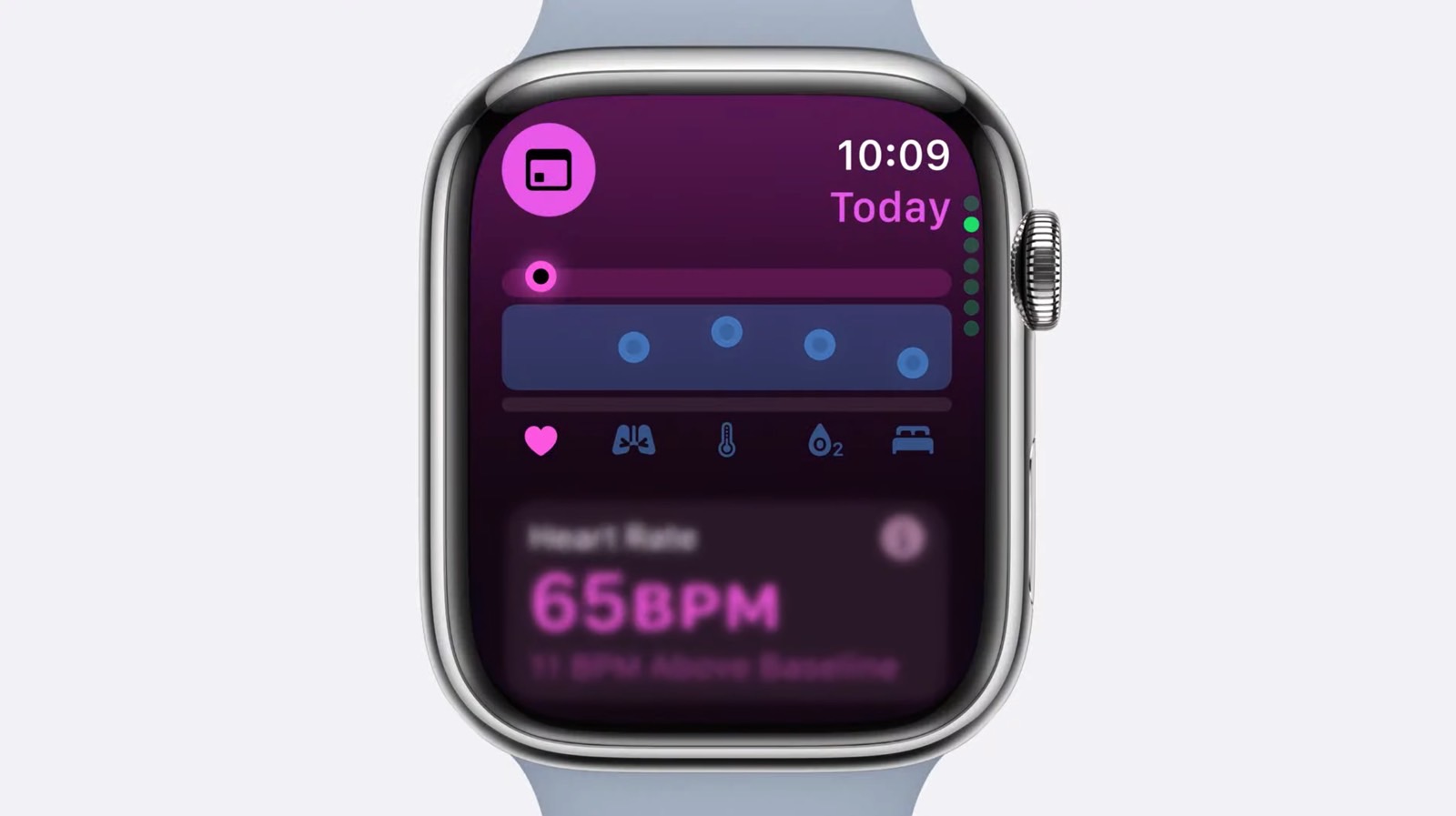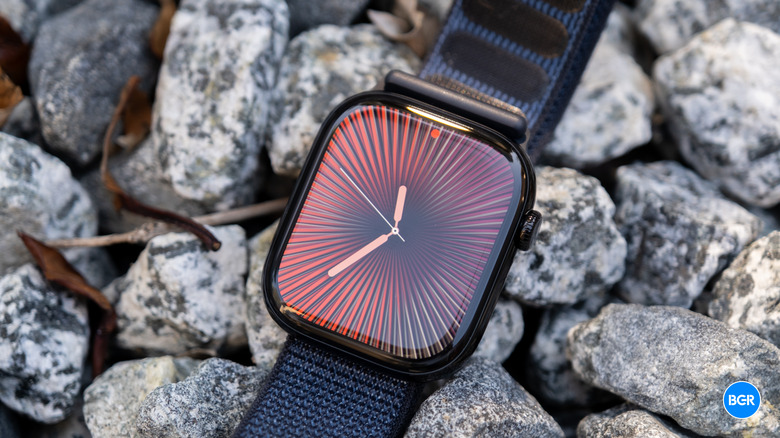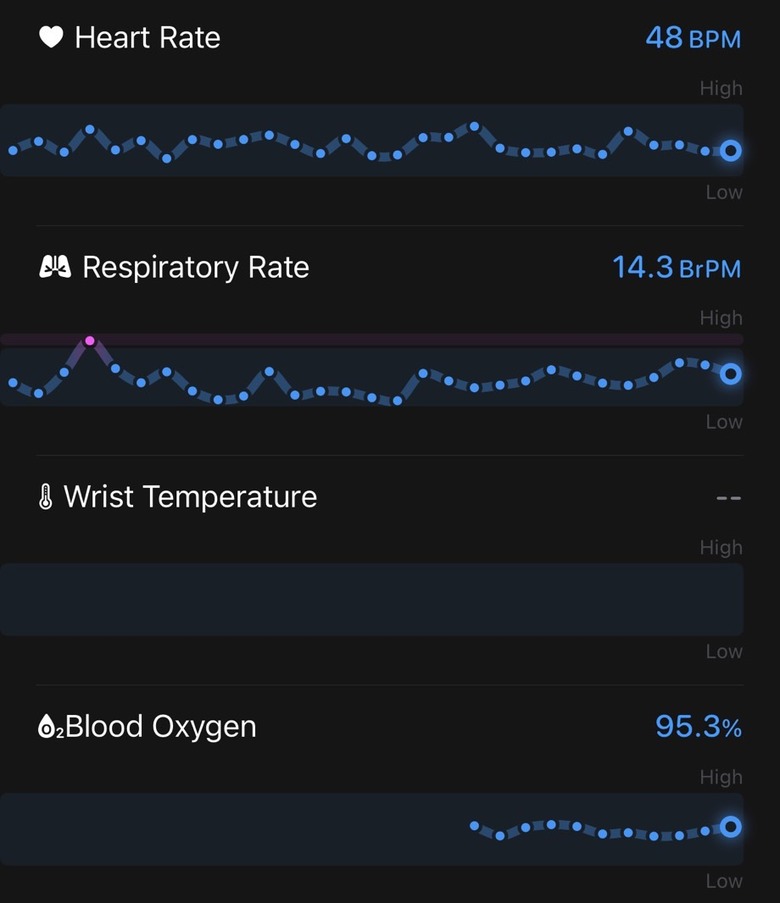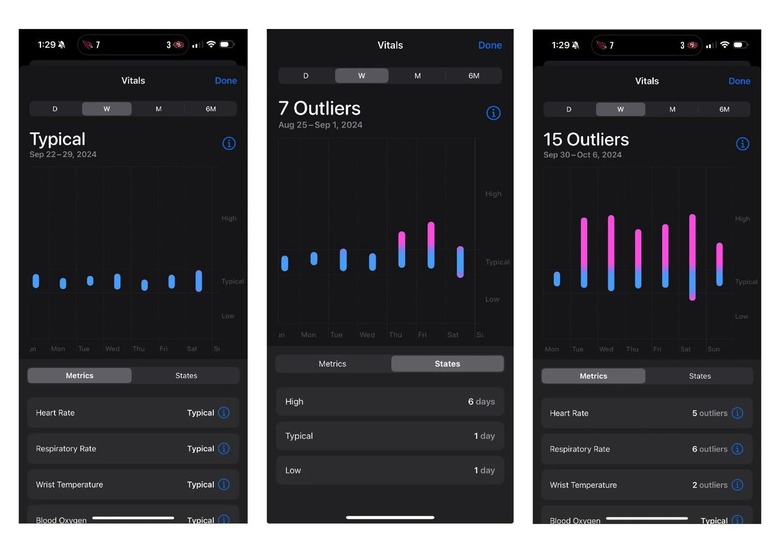I Tested The Apple Watch App Users Say Can 'Predict If You'll Get Sick'
I'm a big fan of wearables like the Apple Watch, as I rely on these devices to track my health and fitness around the clock. That includes sleep tracking, as I wear the Apple Watch at night so it can track my parameters while the body is at rest and recovering. Since I've been a longtime iPhone user, I've used the Apple Watch alongside it, but the same train of thinking would apply to any other ecosystem.
That said, the Apple Watch has a brand new app that I've been using ever since I installed the betas of iOS 18 and watchOS 11 earlier this year to track the trends of my health parameters.
It turns out the app can also predict sickness several days before it happens, at least according to various Apple Watch users. However, I could not take advantage of this feature until I upgraded to the Apple Watch Series 10 from the Apple Watch SE 2.
It's the brand new Vitals app that tracks up to five parameters continuously to give you a bird's eye look at your overall well-being. If these user accounts are accurate, the app might warn you a few days before getting sick. And it might be a good idea to configure it right away ahead of the upcoming flu and COVID seasons.
The Vitals app
The Vitals app is part of the watchOS 11 release. The same information is stored in the Health and Fitness apps on your iPhone. Apple said at WWDC 2024 that it developed the Vitals historical algorithm using real-world data from the Apple Heart and Movement Study.
The Vitals app will include readings for the following parameters: heart rate, respiratory rate, wrist temperature, blood oxygen, and sleep duration. The app will show your baseline for each parameter and point out outliers whenever it registers values above or below your averages.
The Watch will automatically track heart rate and blood oxygen. You'll have to configure the sleep tracking and enable a Sleep Focus mode for wrist temperature collection at night.
If the feature is available in your region, the Watch will also perform blood oxygen readings automatically. Apple Watch Series 10 in the US can't access the feature following an ongoing patent dispute between Apple and Masimo.
As a runner training for marathons, I've used Vitals on my Apple Watch SE 2 to track only three of these parameters: heart rate, respiratory rate, and sleep duration (as seen above). I found Vitals useful to give me an idea of my well-being for the day, and inform me on whether I should make any changes to my training.
Maybe I didn't sleep enough last night, so a look at the Vitals app would be enough to tell me to take it slow today.

But I wanted even more health data. That's one of the reasons I upgraded to the Apple Watch Series 10 last month. The premium wearable comes with wrist temperature tracking and blood oxygen.
My Vitals app is now almost complete. It still has to determine the wrist temperature baseline, as I wasn't using the Sleep Focus mode at night. That's the only way for the Apple Watch Vitals app to get wrist temperature readings.
Apple Watch predicting sickness?
A few days ago, I said that I want to track temperature fluctuations, thinking the Watch might catch tiny changes that could predict an imminent cold, flu, or COVID infection. Studies have shown that Apple Watch heart rate changes could predict a COVID case. But what if small temperature changes could also help with that?
It turns out that some Reddit users have found the Apple Watch's Vitals warnings preceded the onset of symptoms.
A person posted a screenshot showing high wrist temperature readings that preceded them getting sick:
Woke up today feeling a off. Now as the evening is setting in, I am feeling that old familiar feeling in my head. I'm sick
A different person said they started using Vitals since it came out of beta, and they also found the Watch could predict getting sick:
I started using Vitals when it first came out on the beta and since then I've gotten sick about twice. Both times it knew a couple days in advance and I hadn't felt anything wrong
Someone else posted multiple screenshots from the iPhone's Vitals section in the Fitness app to show their typical vitals, the outliers during a case of COVID in August, and the outliers during a recent illness:
I just got the worst illness of my adult life, and my Apple Watch perfectly captured the whole experience.
The first image is a typical week, the second image was when I fought COVID back in late August (and that was nasty too), and the last image has been my past week. I'm very impressed by the vitals app's ability to identify illness and recognize something was off.
Here are those screenshots:
With all this in mind, I'm certainly going to pay attention to the Vitals app even more often during the upcoming months. I usually do it from the Fitness app, which I visit frequently to track my most recent run sessions.
Getting sick is an annoying thought for someone preparing for a marathon race, but it can happen. It happened a few months before my first marathon race.
If the Vitals app can detect early signs, I'll be able to slow down and rest even before symptoms arrive. Then, I'll get back to regular training once the five Vitals parameters fall back to nominal values.
Even if you don't look at the Vitals app that often, you'll receive notifications when multiple parameters are out of range. For that to happen, you need to ensure you are tracking as many of them as possible.
I will add the obvious disclaimer. The Apple Watch isn't to be used as a sickness predictor yet. The tech isn't there. Apple never made such claims during the Apple Watch health segment at WWDC. Instead, Apple wants you to pay attention to the Vitals app so you know when some of your key health parameters are out of bounds. There might be cases where you need to visit a healthcare professional for more guidance.


